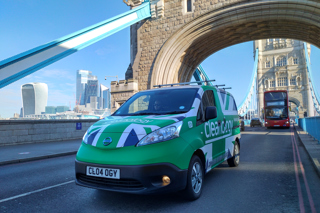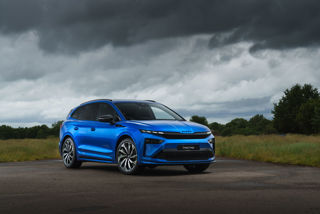Scottish Water has introduced 20 new Nissan e-NV200 electric vans to its fleet, as part of an ongoing transition to plug-in vehicles.
The all-electric LCVs have started performing daily duties for the company and join vans from other manufacturers – and a number of Nissan Leaf pool cars – as Scottish Water forges ahead on its path to ‘net zero’.
Holly McPhee, EV Transition change lead at Scottish Water, said: ‘‘Our new e-NV200s have just been delivered. They look great – and have been very well received.
‘‘They are being used by our water and waste water operational teams, working out of sewage treatment works and water treatment works. They don’t carry huge amounts of equipment but have been converted to accommodate standpipes, personal protective equipment (PPE), etc.’’
A report for the public water and waste water organisation found that up to 60% of its operational fleet could turn electric to reduce transport emissions.
In a comprehensive review of over 1,300 vehicles, Cenex identified where suitable electric vehicles could be introduced, the location and type of charging infrastructure required, and provided a strategic deployment plan to meet Scottish Water's commitment to net zero emissions by 2040.
Pre-pandemic, Scottish Water’s fleet of vehicles – from HGVs and large heavy-payload vans to small general purpose vans and cars – clocked up 19 million miles annually.
The organisation pledged to become net zero by 2040 and set out plans to achieve that in a routemap published in September 2020.
A new Scottish Water project team led by EV vehicle specialists is now in place to take forward the fleet transformation opportunities.
Scottish Water worked with David Stead, corporate manager at Western Nissan, Edinburgh, and Karen Reid, national corporate sales manager at Nissan Fleet Sales, in acquiring the vehicles.
Stead said: ‘‘It was a pleasure to work with Holly and her team on the procurement of this batch of 20 e-NV200s for Scottish Water.
‘‘The e-NV200 is a proven performer for companies and organisations of all shapes and sizes and we couldn’t be more delighted to have been involved in the supply of these vehicles.’’
Reid added: ‘‘Scottish Water has shown that it is serious about decarbonising its operations and the team there deserve huge credit for their efforts.
‘‘We’re delighted to have been a chosen manufacturer partner as they have been adding EVs to their vehicle parc and we look forward to the relationship continuing for many years to come.’’
As well as achieving significant emission savings, including carbon dioxide and nitrogen oxides, the electric vehicles are expected to generate substantial financial savings for the fleet from reduced fuel and maintenance costs over their operational life.
Scottish Water is also exploring the use of alternative fuels for heavy vehicles including compressed natural gas (CNG) and “drop-in” fuels such as Hydrotreated Vegetable Oil (HVO).
Crucial to successful roll-out is access to electric vehicle charging points at strategic locations across the country. Charging stations have already been installed at key Scottish Water offices, treatment plants and depots. Scottish Water Horizons, the utility’s commercial subsidiary, are installing charge points during the build of new renewables sites as a cost-effective way of accelerating their deployment.
Robert Anderson, senior fleet specialist at Cenex, said: “With such a large and varied operation, Scottish Water was one of the most complex vehicle fleets for us to assess and plan for a zero-emission fleet transition. In-depth analysis has shown that even with such a varied fleet operation, there is still great potential to transition the van fleet to electric, with limited impact on business operations.”
New code to add to EV stories:
> Interested in comparing electric vehicle data? Check out our EV tool.
> Interested in ensuring the efficient use of EVs. Check out our dedicated editorial sections: Insight & policy | EV news | Charging & infrastructure | Costs & incentives | Benefit-in-kind | EV case studies | EV road tests






















Login to comment
Comments
No comments have been made yet.